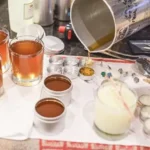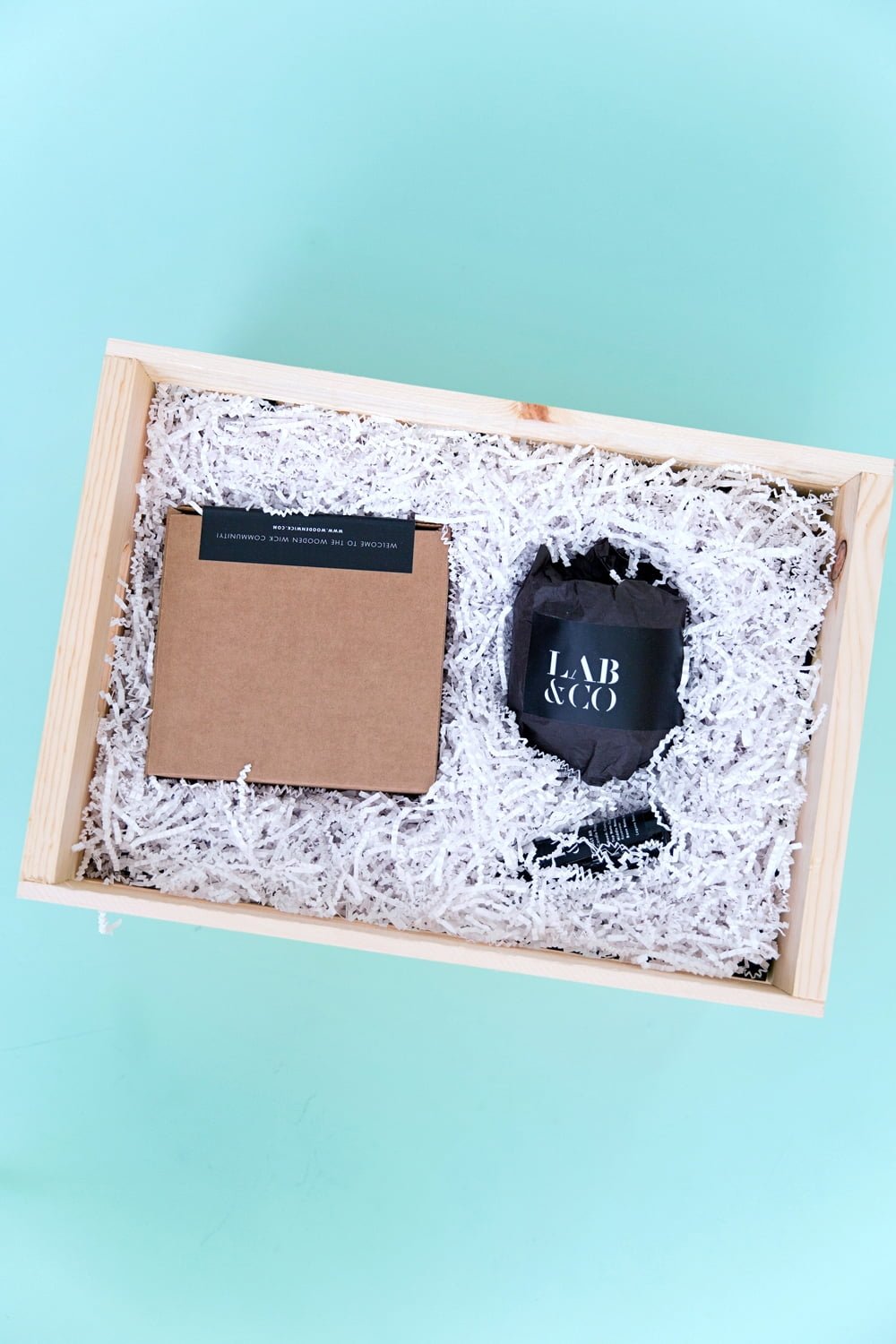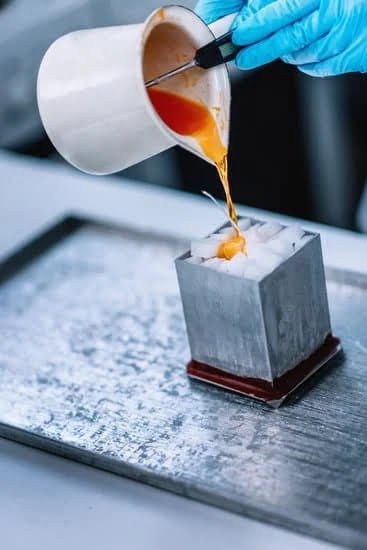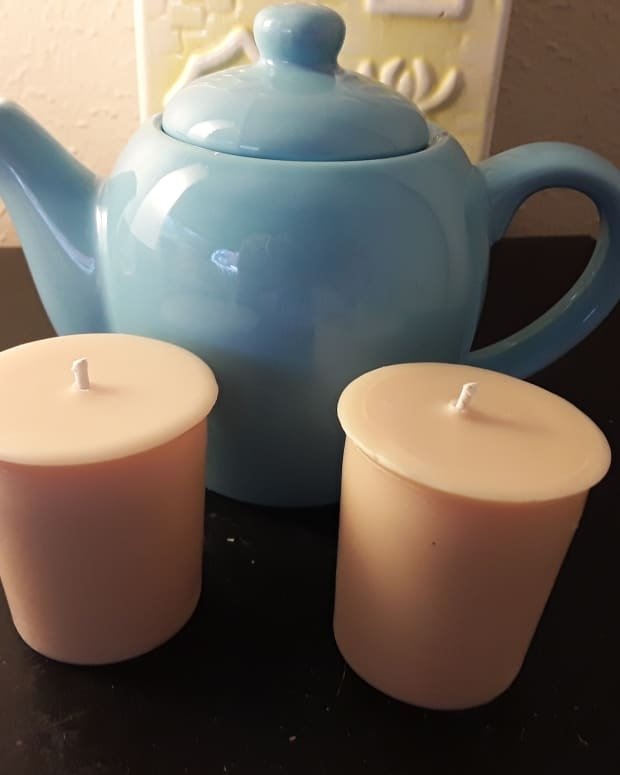Are you interested in learning how to candle making at home? Candle making is a time-honored tradition that has been around for centuries, with candles being used for practical and decorative purposes. In this article, we will explore the art of candle making, from choosing the right materials to personalizing your creations. Whether you’re a beginner or an experienced crafter, making your own candles can be a rewarding and enjoyable hobby.
Candle making has a rich history, dating back to ancient times when candles were primarily made from tallow or beeswax. Over the years, the process of candle making has evolved, with various types of waxes, fragrances, and colors now available for creating unique and custom candles. Making candles at home also offers numerous benefits, including the ability to customize scents, colors, and designs to suit your personal preferences.
In this comprehensive guide, we will provide you with everything you need to know about candle making at home. From essential tools and materials to step-by-step instructions and safety precautions, you’ll learn how to create beautiful candles in the comfort of your own space. Whether you’re looking to save money on store-bought candles or simply enjoy the satisfaction of crafting something by hand, homemade candle making is a delightful and fulfilling endeavor.
Choosing the Right Materials
When it comes to making your own candles at home, the first step is choosing the right materials. The type of wax you use can have a significant impact on the quality and burn time of your candles. Soy wax, beeswax, and paraffin wax are popular options, each with its own unique characteristics.
In addition to choosing the right wax, selecting the appropriate wick is crucial for a successful candle-making experience. Wicks come in different sizes and materials, such as cotton or wood, and finding the right one for your specific project is essential.
When it comes to adding fragrance and color to your homemade candles, there are countless options available. Whether you prefer essential oils for a natural scent or fragrance oils for a wider range of scents, it’s important to choose high-quality products to ensure a pleasant and long-lasting aroma. Similarly, using quality candle dyes or color blocks can help achieve vibrant colors and consistency in your finished product.
| Materials | Options |
|---|---|
| Wax | Soy wax, beeswax, paraffin wax |
| Wick | Cotton wick, wood wick |
| Fragrance/Color | Essential oils; fragrance oils; candle dyes; color blocks |
Essential Tools for Candle Making
When it comes to creating your own candles at home, having the right tools and equipment is essential for a successful and safe process. Here is a detailed list of the tools you will need to get started:
1. Double Boiler or Wax Melter: This is used to melt the wax gently and evenly without scorching it. A double boiler can be as simple as a heatproof container set in a pot of hot water.
2. Thermometer: It is important to monitor the temperature of the wax to ensure that it doesn’t overheat or cool too quickly. A candy thermometer works perfectly for this task.
3. Pouring Pitcher: This allows you to pour the melted wax into your containers without spilling or making a mess.
4. Wick Holder: This tool keeps the wick centered as you pour the wax, ensuring an even burn.
5. Scented Oils and Dyes: If you choose to add fragrance and color to your candles, these materials are essential for creating beautifully scented and colored creations.
6. Molds or Containers: Depending on your preferred candle style, you will need molds or containers in various shapes and sizes.
It is important to note that while these are essential tools for candle making, there are other optional tools that can enhance your candle-making experience even further.
With these essential tools in hand, anyone can start creating their own beautiful candles at home. Taking the time to gather all necessary materials will ensure a smooth and enjoyable candle making process.
Step-by-Step Guide to Candle Making
Making your own candles at home can be a rewarding and enjoyable hobby. Not only does it allow you to create unique, personalized candles for yourself, but it also makes for thoughtful gifts for friends and family. Here’s a step-by-step guide on how to candle making at home that will walk you through the process.
First, gather all the necessary materials and tools. This includes wax, wicks, fragrance oils, a double boiler or melting pot, thermometer, and containers for your candles. It’s important to choose the right type of wax for your project – options include soy wax, paraffin wax, and beeswax. Select a wick size appropriate for the type of wax you’re using and decide on the fragrance and color you’d like for your candles.
Next, prepare your work area by covering surfaces with newspaper or disposable tablecloths to protect them from any spills or drips. Carefully melt the wax in a double boiler or melting pot over low heat, stirring occasionally until it reaches the desired temperature based on the type of wax being used. Once melted down, add in any desired color dyes or fragrance oils.
Then, carefully pour the melted wax into your chosen candle containers and insert the wick into place. Allow the candles to cool completely before trimming wicks to about 1/4 inch above the surface of the candle. Congratulations. You have successfully made homemade candles.
As you can see, learning how to candle making at home is an accessible craft that provides endless opportunities for creativity. With some practice and experimentation with different materials and techniques, you’ll be able to master the art of candle making in no time. Remember to always follow safety precautions when working with hot wax and open flames to ensure a pleasant (and incident-free) candle making experience.
Safety Precautions
When undertaking the process of candle making at home, it is essential to prioritize safety. Working with hot wax and open flames poses a potential risk, and taking proper precautions is crucial in preventing accidents. Here are some key safety measures to keep in mind when engaging in the art of candle making:
1. Ventilation: Ensure that the area in which you are making candles is well-ventilated to prevent the accumulation of fumes from the melting wax. Opening windows or using a fan can help maintain air circulation and reduce the risk of inhaling harmful vapors.
2. Protective Gear: Wear appropriate clothing, including long sleeves and closed-toe shoes, to protect your skin from accidental spills or splashes of hot wax. Additionally, using heat-resistant gloves when handling hot materials is highly recommended.
3. Fire Safety: Have a fire extinguisher easily accessible and ready for use in case of an emergency. Always keep a close eye on any open flame, such as a candle or melting pot, and never leave them unattended.
4. Caution with Hot Wax: Be extremely careful when working with melted wax to avoid burns or spills. Use a designated double boiler or wax melter and handle it with care to prevent any accidents.
5. Storage Precautions: Store your candle making materials safely out of reach from children and pets. Keep flammable items away from heat sources and ensure that all containers holding hot wax are stable and secure.
By following these safety precautions, you can enjoy the process of how to candle making at home without compromising your well-being or that of those around you. Prioritizing safety allows you to focus on creating beautiful homemade candles while minimizing potential risks associated with this craft.
Decorating and Personalizing Your Candles
Once you have mastered the art of candle making at home, the next step is to explore different ways to decorate and personalize your creations. Adding unique touches to homemade candles can make them stand out and reflect your personal style. Here are some ideas for taking your candle-making hobby to the next level.
Adding Natural Elements
One popular way to decorate homemade candles is by incorporating natural elements such as dried flowers, herbs, or even pieces of bark. To do this, simply place these items on the surface of the candle while the wax is still soft. This not only adds a beautiful touch to your candles but also infuses them with a lovely aroma when they are lit.
Experimenting With Color and Design
Another way to personalize your candles is by experimenting with different colors and designs. Consider using colored wax or adding swirls of vibrant hues to create visually striking patterns. You can also play around with different molds and shapes to give your candles a unique look.
Customizing Labels and Packaging
To add a professional touch to your homemade candles, consider creating custom labels and packaging. This can involve designing your own labels with personalized messages or branding, as well as choosing stylish containers or gift boxes to present your candles in.
By adding these personal touches, you can elevate your candle making at home from a simple hobby to a creative and gratifying experience. Experiment with different decorating techniques and find what works best for you, whether it’s adding natural elements, playing with colors and designs, or customizing labels and packaging. The possibilities are endless when it comes to making beautiful, personalized candles right in the comfort of your own home.
Troubleshooting Common Issues
Identifying Common Problems
When it comes to candle making at home, there are a few common issues that may arise during the process. One of the most prevalent problems is uneven burning, which can lead to tunneling or a waxy residue on the sides of the container.
Scent throw, or the strength of the fragrance in the candle, is another issue that many beginners struggle with. Additionally, air bubbles or sinkholes in the wax and wick-related problems such as mushrooming or soot buildup are also common challenges.
Solutions and Tips
To avoid uneven burning, it’s important to choose the right size wick for the container and type of wax being used. Properly trimming the wick before each use can also help maintain an even burn. For scent throw issues, experimenting with different types and amounts of fragrance oils may be necessary to find the perfect combination for a strong, pleasant aroma.
Air bubbles and sinkholes can be prevented by pouring wax at the correct temperature and tapping the container gently to release trapped air. It’s also important to choose high-quality materials and follow proper pouring techniques to minimize these imperfections.
When it comes to wick-related problems, selecting a suitable wick size for the chosen wax and container is crucial. Trimming the wick regularly and keeping it centered while the candle is setting will help prevent mushrooming and soot buildup.
Avoiding Common Issues
In addition to implementing these solutions, some preventative measures can help reduce common candle making issues. These include thoroughly researching different types of wax, wicks, fragrances, and colors before starting a project. Following step-by-step guides carefully and taking note of any specific instructions related to troubleshooting can also save time and frustration in the long run when making candles at home.
Conclusion and Next Steps
Making your own candles at home can be a rewarding and enjoyable hobby, offering a range of benefits. Not only can it save you money, but it also allows you to create personalized, unique candles that suit your tastes and preferences.
Additionally, the process of candle making can be a therapeutic and relaxing activity, making it an ideal way to unwind after a long day. The ability to customize the fragrance, color, and design of your candles ensures that each one is truly one-of-a-kind.
To get started with how to candle making at home, it’s essential to choose the right materials. Selecting the appropriate wax, wicks, fragrances, and colors will determine the quality and appearance of your candles. It’s also important to invest in essential tools such as a double boiler or melting pot, thermometer, pouring pitcher, and molds. These tools will make the process smoother and safer for you.
Once you have gathered all necessary materials and tools for candle making, follow a step-by-step guide to ensure successful results. Pay close attention to safety precautions when working with hot wax and be sure to troubleshoot any common issues that may arise during the process.
After creating your homemade candles, don’t forget to add personal touches by decorating them in unique ways. With practice and experience, you’ll become more skilled at candle making and may even find new opportunities for gifting or selling your creations for different occasions.
Bonus Section
In conclusion, learning how to candle making at home can be a rewarding and fulfilling hobby. Not only does it allow for creative expression and personalization, but it also provides a sense of accomplishment as you see your homemade candles come to life. By following the step-by-step guide provided in this article, you can create beautiful and unique candles that are perfect for any occasion.
It’s important to remember that safety should always be a top priority when engaging in candle making at home. By following the recommended safety precautions and handling hot wax with care, you can avoid accidents and enjoy the process without worry. Additionally, being aware of common issues that may arise during candle making will help you troubleshoot any problems and achieve the desired results.
Whether you’re making candles for holidays, weddings, or other special occasions, the bonus section of this article provides valuable tips for creating memorable and thoughtful gifts. From selecting the right fragrance to packaging and presenting your homemade candles, these tips will help you add a personal touch to any event. Overall, candle making at home offers endless possibilities for creativity and self-expression.
Frequently Asked Questions
What Do I Need to Make Candles at Home?
Making candles at home requires a few essential ingredients and materials. First, you’ll need wax, which can be soy, beeswax, paraffin, or a blend of these.
You’ll also need candle wicks, fragrance or essential oils for scent, and color dye if you want to add color to your candles. Additionally, you’ll need a double boiler or melting pot to melt the wax, a thermometer, a container to pour the wax into (like a jar or tin), and something to stir the wax with.
Is It Cheaper to Make Your Own Candles?
In many cases, making your own candles can be cheaper than buying them from a store. The initial investment in supplies may seem costly at first, but once you have everything you need, you can make multiple candles from the same materials.
This can end up being more cost-effective in the long run compared to purchasing individual candles. Plus, making your own candles allows you to customize the scent and look of each candle to your preference.
What Is Best Wax for Candles?
Different types of wax are suitable for different purposes when it comes to making candles. For example, soy wax is known for its clean burn and ability to hold scent well. Beeswax is natural and has a subtle honey scent.
Paraffin wax is great for holding color and scent but may not be as natural as other options. Ultimately, the “best” wax for candles depends on what qualities are most important to you for your specific candle-making project—whether it’s sustainability, throw of scent, burn time or something else entirely.

Welcome to my candle making blog! In this blog, I will be sharing my tips and tricks for making candles. I will also be sharing some of my favorite recipes.





